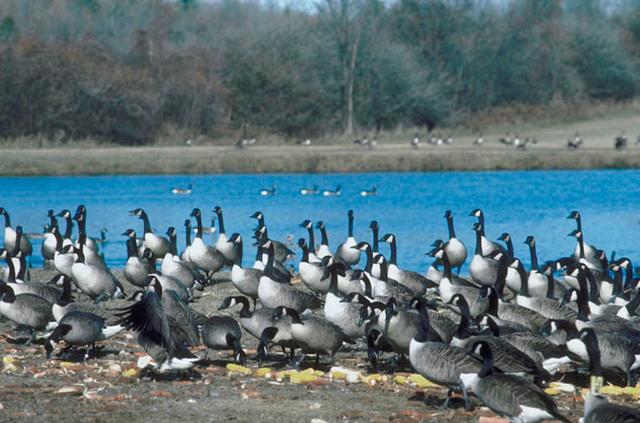The trouble with geese
The Scoop on Goose Poop. You will not believe it!
The Lake is Their Outhouse
Geese add tremendous amounts of nutrients and bacteria to the lake. Geese can defecate as many as 92 times a day. Just 50 geese can produce two and a half tons of excrement in a year. Every dropping contains nitrogen and phosphorus, the major contributors to accelerated weed growth in Paw Paw Lake.
DNR / Paw Paw Lake Lake Foundation Goose Round-Up
The Foundation working with the Michigan Department of Natural Resources (DNR), will conduct a “round-up” of the over population of geese on Paw Paw Lake. The permitted event is conducted in June by a contractor licensed by the state of Michigan. After the geese have been rounded up, they are relocated by the DNR.
The Paw Paw Lake Foundation is a 501(c)(3) organization dedicated to improving Paw Paw Lake and is funded exclusively by donations. Donations can be sent to PPLF, PO Box 341, Watervliet, MI 49098.
Their Story
The ubiquitous Canada goose (not "Canadian") is one of the best known birds in North America. It is found in every contiguous U.S. state and Canadian province at one time of the year or another.Canada geese are adaptable to many habitats and may thrive wherever grasses are available.
Because of changing weather, settlement, and farming patterns, many Canada geese have begun to alter their migrations. Typically, the birds summered in northern North America and flew south when cold weather arrived. This cycle endures, but some northern populations have shortened their flight to less traditional wintering grounds in the U.S.
Canada geese have become permanent residents of parks, golf courses, resort lakes, and other human habitats across Michigan. In some locations, such as residential lake areas like Paw Paw Lake, they are so numerous that they are considered a nuisance and a health hazard. Keeping populations in check is important because of their detrimental effect on the environment.

